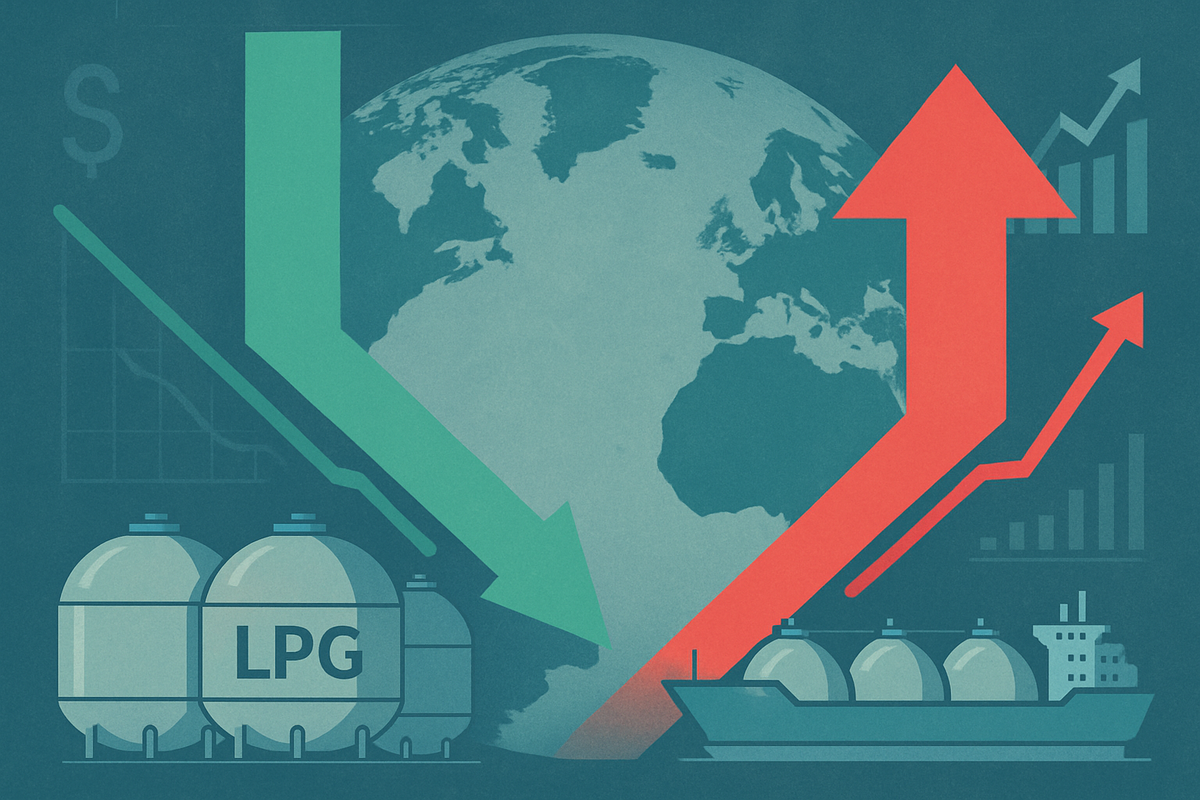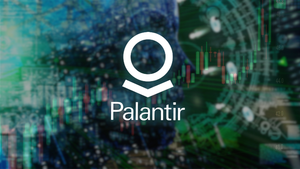
The global liquefied petroleum gas (LPG) market is currently witnessing a fascinating divergence in pricing strategies from two of its most influential players. For October 2025, Saudi Aramco (Tadawul: 2222), the world's largest oil producer, has announced significant cuts to its Official Selling Prices (OSPs) for LPG, aiming to bolster its market position in the competitive Asia-Pacific region. In stark contrast, Algeria's state-owned Sonatrach has opted to raise its LPG prices for the same month, driven by robust demand in its primary markets across the Mediterranean and Black Sea regions. This strategic schism by two energy giants is set to create immediate ripple effects, reshaping regional trade flows, creating arbitrage opportunities, and influencing the profitability of companies across the LPG value chain.
This contrasting approach underscores the complex interplay of regional supply-demand dynamics, geopolitical influences, and individual corporate strategies that characterize the modern energy commodity markets. As the industry grapples with evolving consumption patterns and the ongoing energy transition, these pricing decisions highlight the localized pressures and opportunities that dictate global energy trade, offering a compelling case study for financial market readers.
The October 2025 LPG Price Divide: Specifics and Market Reactions
For October 2025, Saudi Aramco's pricing adjustments reflect a clear intent to enhance competitiveness. The company decreased its propane OSP by $25 per metric ton, settling at $495 per ton, and cut its butane OSP by $15 per metric ton, bringing the price to $475 per ton. These reductions represent a 3.1% to 4.8% decrease from September levels, making Middle Eastern LPG more attractive to Asian buyers. The rationale behind these cuts is largely attributed to efforts to maintain market share amidst a backdrop of potentially rising global production, particularly from the United States, and a need to stimulate demand in key Asian markets, which have shown varying levels of appetite for LPG.
Conversely, Sonatrach has signaled strong regional demand by increasing its LPG prices. Propane prices were raised by $20 per ton to $470 per ton, while butane prices saw a more substantial increase of $40 per ton, reaching $465 per ton. These increases, ranging from 4.4% to 9.4%, are primarily driven by robust demand in the Mediterranean, Black Sea region, and Turkey, where Sonatrach's OSPs serve as a key benchmark. The timeline leading up to this moment has seen global LPG markets influenced by a mix of factors, including seasonal demand shifts, geopolitical events, and the varying pace of economic recovery across different continents. Initial market reactions suggest that traders are keenly observing these price differentials, poised to capitalize on arbitrage opportunities that emerge from the spread between East of Suez and West of Suez pricing.
Key players and stakeholders involved span the entire energy ecosystem. Beyond Saudi Aramco and Sonatrach, these include other National Oil Companies (NOCs) like Sinopec (SSE: 600028) and ADNOC, International Oil Companies (IOCs) such as ExxonMobil (NYSE: XOM) and Shell (LSE: SHEL), regional distributors, global shipping companies, and the vast petrochemical industry that relies on LPG as a crucial feedstock. Governments and regulatory bodies also play a significant role through policies, subsidies, and environmental regulations that shape the demand and supply landscape.
Winners and Losers: Corporate Impact Across the LPG Value Chain
The diverging pricing strategies are poised to create distinct winners and losers across the global LPG market, directly impacting revenues, market share, and operational costs for public companies depending on their primary sourcing and operational geographies.
LPG Production Companies: While Saudi Aramco (Tadawul: 2222) will see lower per-unit revenue from its LPG sales, the strategic price cuts could enable it to increase sales volumes and solidify or expand its market share in the critical Asia-Pacific region. This move might put pressure on other Middle Eastern producers to adjust their pricing to remain competitive. Sonatrach, on the other hand, stands to boost its per-unit revenue from LPG sales due to higher prices, assuming demand in its target markets remains strong. However, it risks losing market share if buyers in the Mediterranean and Black Sea regions seek cheaper alternative supplies. Other major global producers with diversified operations, such as ExxonMobil (NYSE: XOM), BP (LSE: BP), and Shell (LSE: SHEL), may experience indirect impacts, with their regional pricing strategies potentially influenced by these competitive shifts.
LPG Distribution and Marketing Companies: Companies heavily reliant on Middle Eastern supply, particularly those operating in the Asia-Pacific region like China Gas Holdings Ltd. (HKEX: 0384) and sections of Bharat Petroleum Corporation Limited (NSE: BPCL), are poised to benefit from lower procurement costs. This will directly improve their gross margins, allowing them to either maintain higher profitability or pass on savings to consumers, potentially increasing their retail market share. Conversely, European and Mediterranean distributors primarily sourcing from Algeria will face higher input costs, squeezing their margins. Companies with diversified sourcing capabilities, such as DCC Plc (LSE: DCC), are better positioned to mitigate risks by shifting procurement towards more competitively priced sources.
LPG Shipping Companies: The shift in trade flows will have a direct impact on the maritime sector. Shipping companies with significant Very Large Gas Carrier (VLGC) fleets operating on routes from the Middle East to Asia-Pacific, including major players like BW LPG (OSE: BWLPG), Dorian LPG (NYSE: LPG), and Avance Gas (OSE: AGAS), might see increased demand for their services, leading to higher vessel utilization and potentially firmer freight rates. Conversely, vessels primarily serving the Mediterranean and European routes from Algeria might experience reduced demand if Sonatrach's higher prices deter buyers, potentially leading to lower charter rates on those specific routes.
Petrochemical Companies: This sector, a major consumer of LPG as feedstock, will also see a bifurcated impact. Petrochemical producers in Asia, such as Formosa Petrochemical (TPE: 6505), Lotte Chemical (KRX: 011170), and LG Chem (KRX: 051910), that utilize LPG from the Middle East will benefit significantly from lower feedstock costs. This directly reduces their operational expenditure, improves their cost competitiveness for derivatives like ethylene and propylene, and could lead to increased cracking rates and higher profitability. In contrast, petrochemical producers in the Mediterranean, Black Sea, and Turkey that rely on Sonatrach's LPG will face higher feedstock costs, eroding their profit margins and making them less competitive. These companies may be forced to consider switching to alternative feedstocks like naphtha if the price differential becomes too wide. Companies with feedstock flexibility are best positioned to adapt by optimizing their feedstock mix.
Wider Significance: Industry Trends and Ripple Effects
The diverging LPG pricing strategies by Saudi Aramco (Tadawul: 2222) and Sonatrach for October 2025 are not isolated events but rather symptomatic of broader industry trends and will generate significant ripple effects across the global energy landscape. This dynamic highlights the increasing regionalization of energy markets, influenced by distinct supply-demand balances, geopolitical considerations, and the ongoing energy transition.
Broader Industry Trends: The global LPG market is experiencing steady growth, fueled by rising demand from residential, commercial, and petrochemical sectors, particularly in Asia. LPG's role as a cleaner-burning fuel aligns with global environmental regulations, supporting its long-term demand. However, supply dynamics are complex, influenced by OPEC+ policies (affecting associated gas production), the continued, albeit slower, growth of US shale NGLs, and persistent geopolitical risks that can disrupt trade flows. The reported structural oversupply of propane from the US, for instance, has been impacting European markets, contributing to a faltering of the traditional winter rally.
Ripple Effects on Competitors and Partners: The price cuts by Saudi Aramco (Tadawul: 2222) will undoubtedly pressure other Middle Eastern and global LPG suppliers to adjust their pricing to maintain market share in Asia. Conversely, Sonatrach's price increases could make Mediterranean-sourced LPG less attractive, potentially driving buyers to seek alternatives from other regions, including the US, or even shift to other feedstocks. This creates significant arbitrage opportunities for international traders, who will actively seek to buy from cheaper sources and sell to more expensive ones, provided logistics costs are manageable. The petrochemical industry, a major consumer of LPG, will see its profitability and competitiveness directly impacted, with Asian producers benefiting from lower feedstock costs and Mediterranean/European producers facing higher input expenses.
Regulatory or Policy Implications: These pricing decisions can have significant regulatory implications. Many national regulatory bodies, such as Pakistan's Oil and Gas Regulatory Authority (Ogra), link domestic LPG prices directly to Saudi Aramco's Contract Prices (CP). Therefore, a decrease in Aramco's prices could lead to reduced domestic LPG rates in such countries, offering relief to consumers. Governments also influence LPG markets through subsidies, taxation, and policies aimed at promoting cleaner fuels or ensuring energy security. Diverging prices might also prompt scrutiny regarding market dominance or fair competition if price actions are perceived as anti-competitive, though this is less likely when reflecting genuine regional supply-demand differences.
Historical Precedents and Comparisons: The energy commodity markets have a long history of price volatility and diverging strategies. Similar to crude oil, LPG prices are influenced by the collective and individual decisions of major producers. Regional price divergences are common, reflecting localized supply-demand balances, transportation costs, and specific market structures. For instance, in 2025, Asian markets have often shown a price premium over Mediterranean prices due to stronger demand. Historical events like the Panama Canal disruptions have demonstrated how critical transit routes can impact shipping costs and global commodity prices, while trade tensions (e.g., US-China) have forced shifts in LPG sourcing. Seasonal demand, particularly for propane, also plays a role, though structural oversupply might be dampening traditional seasonal rallies.
What Comes Next: Navigating the Evolving LPG Landscape
The divergent LPG pricing strategies of Saudi Aramco (Tadawul: 2222) and Sonatrach for October 2025 are setting the stage for a dynamic period in the global LPG market, with both short-term shifts and long-term strategic adaptations on the horizon.
Short-Term Possibilities (October-December 2025): The immediate outlook points to heightened arbitrage activity. Traders will be quick to exploit the price differentials, particularly as Saudi Aramco’s propane is priced higher than Sonatrach’s, while butane prices are relatively close, leading to reshaped trade flows. Asia-Pacific buyers are expected to favor competitively priced Middle Eastern LPG, potentially boosting imports into countries like China, Japan, and India. Conversely, buyers in the Mediterranean and Black Sea regions will face higher costs, prompting them to either absorb the increases due to strong local demand or actively seek alternative, more competitively priced supplies from other origins like the US, assuming logistics are favorable. This will necessitate efficient logistics and shipping optimization to capitalize on new trade patterns. The ongoing tightness in the butane market versus length in propane markets could also lead to specific arbitrage plays for each component.
Long-Term Possibilities (2026 and Beyond): The long-term trajectory of the global LPG market will continue to be shaped by several fundamental drivers. North American LPG exports, particularly from the US, are forecast to maintain significant growth, adding to global supply. The Asia-Pacific region is projected to remain the primary and fastest-growing market, driven by expanding residential, commercial, and petrochemical demand. LPG's role as a cleaner-burning fuel will also support its demand as part of the energy transition, especially in developing economies. However, geopolitical and trade policy impacts will continue to introduce volatility and uncertainty, necessitating agile and diversified sourcing strategies. Investment in LPG infrastructure, including export terminals and distribution networks, will be crucial for sustained market growth, with the global LPG market size projected to reach $197.34 billion by 2033, growing at a CAGR of 3.33% from 2025.
Strategic Pivots and Adaptations: Market participants across the value chain will need to adapt. Traders and arbitrageurs must remain exceptionally agile, constantly monitoring price differentials and freight rates. Buyers in Asia will likely prioritize Middle Eastern LPG but should maintain flexibility to source from other regions. Mediterranean buyers must evaluate procurement strategies, potentially exploring a wider range of suppliers or engaging in long-term contracts. Logistics and shipping companies should consider investments in modern, fuel-efficient vessels and enhance digital optimization capabilities. Producers like Saudi Aramco (Tadawul: 2222) will likely continue focusing on market share in Asia, while Sonatrach aims to maximize revenue from strong regional demand. The petrochemical industry will closely monitor price spreads and cracker margins, especially with new capacities coming online in Asia.
Emerging Market Opportunities and Challenges: Opportunities lie in Asia-Pacific's growing appetite, African nations' efforts to boost LPG penetration (e.g., Kenya), and Latin American market liberalization. Challenges include geopolitical volatility impacting supply chains, logistical hurdles in developing regions, potential market instability due to structural oversupply, and the need to meet evolving environmental regulations.
Wrap-up: Assessing the Market and Guiding Investors
The diverging LPG pricing strategies by Saudi Aramco (Tadawul: 2222) and Sonatrach for October 2025 serve as a stark reminder of the complex, regionalized, and interconnected nature of the global energy markets. This event underscores that while overarching global trends exist, local supply-demand fundamentals and strategic corporate decisions can lead to significant and impactful divergences.
Key Takeaways:
- Regional Disparity: The decisions highlight distinct market conditions in the Asia-Pacific (Saudi Aramco's focus) versus the Mediterranean/Black Sea (Sonatrach's focus), leading to opposing price movements.
- Arbitrage Potential: The price spread creates immediate and lucrative arbitrage opportunities for agile traders, reshaping short-term trade flows.
- Cost and Competitiveness: Businesses across the LPG value chain—from producers and distributors to shippers and petrochemical companies—will experience varying impacts on their operational costs and market competitiveness based on their geographical sourcing and sales.
- Strategic Positioning: Saudi Aramco's cuts aim to defend or expand market share in a competitive Asian market, while Sonatrach's increases capitalize on strong regional demand.
Assessment of the Market Moving Forward: The global LPG market is poised for continued dynamism. While crude oil prices remain a significant influence, regional supply-demand balances, logistical efficiencies, and geopolitical stability will increasingly dictate localized pricing and trade patterns. The structural oversupply of propane, particularly from the US, suggests that traditional seasonal rallies might be less pronounced, leading to more unpredictable market behavior. However, the long-term growth trajectory for LPG remains positive, driven by its role as a cleaner energy source in developing economies and its critical function as a petrochemical feedstock.
Significance and Lasting Impact: These diverging strategies emphasize the need for market participants to possess robust market intelligence and flexible supply chains. The lasting impact will likely be a reinforcement of regional market characteristics, with a persistent need for arbitrage to balance global supply. It also underscores the growing importance of feedstock flexibility for petrochemical producers to mitigate price volatility.
What Investors Should Watch For in Coming Months:
- Crude Oil Price Trends: Monitor Brent and WTI crude oil prices, as they remain a primary driver for LPG.
- Regional Demand Indicators: Keep an eye on economic data and energy consumption trends in Asia (for Saudi Aramco's influence) and Europe/Mediterranean (for Sonatrach's influence).
- LPG Inventory Levels: Track inventory data in major consuming regions for insights into supply/demand balance.
- Freight Rates: Changes in shipping costs, particularly for VLGCs, can significantly impact arbitrage economics and delivered prices.
- New Production & Export Capacities: Watch for announcements of new LPG production or export terminals, which could alter global supply dynamics.
- Geopolitical Developments: Any events disrupting oil and gas production or trade routes will have an immediate impact.
- Announcements from Key Producers: Pay close attention to official statements or news regarding pricing strategies, production targets, or long-term contracts from Saudi Aramco (Tadawul: 2222), Sonatrach, and other major LPG players.
- Petrochemical Margins: For investors in the petrochemical sector, understanding LPG pricing is crucial as it directly affects feedstock costs and profitability.
This content is intended for informational purposes only and is not financial advice.





